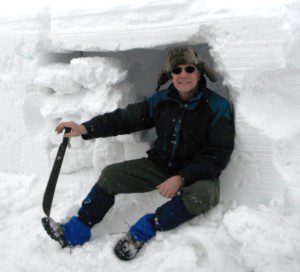One of the first winter camping clothing items you should get is a pair of wool pants.
Here is how to pick the ones that will suit your needs best.
by Leon Pantenburg
After my first afternoon in the Confederate Army, I was ready to desert. Leading my list of complaints was the thick wool uniform.
I was an embedded journalist with the Confederates at the re-enactment battle of Champion Hill near Jackson, Miss. I’d borrowed authentic weapons, accouterments and uniform from the Vicksburg National Military Park, and I was about to melt in the 90 plus-degree heat.
The wool kepi I wore provided virtually no sun protection and the heavy pants and jacket were like wearing a sweat suit. No body heat escaped. It’s hard to imagine a worse material for the hot, humid weather of the Deep South than wool.
But, on the other hand, there is no worse pair of pants for winter survival than denim jeans. The cotton fabric sucks heat from your body, and once they get wet, the moisture wicks through the material until it’s completely soggy.
While there are synthetic clothing options available, for my money, nothing beats wool in winter. Where I live in Central Oregon, wool is my favorite material for pants about six months out of the year. Also, the material is fire resistant, and stays warm when wet.
Wool can also be inexpensive: Last fall at the local surplus store, I got a lightweight pair of wool pants for $7.95. And once you find a good wool garment, it will last seemingly forever. My old Lands End red wool sweater has served me well for the past 20 years, and it’s still going strong. The biggest danger is my wife finding and sending the sweater to the thrift store!
Here are some tips for choosing wool pants.
- Size: Get a couple inches or so bigger around the waist. They will shrink with use. You may want to wear
polypropylene long underwear underneath, or synthetic pajama bottoms if wool makes you itch. Never wear 100-percent cotton thermal longjohns – they will get damp from perspiration and suck the heat away. Also, you’ll want plenty of room in the seat and thighs of the pants if the plans include vigorous snow sports, such as snowshoeing or cross-country skiing.
- Not too long: While it may be the style to wear pants cuffs that drag on the ground, that isn’t going to work well in snow. With gaiters, you’ll have to tuck the pant legs in them, and unnecessary bulk can be a pain.
- Lots of pockets: I carry a BIC butane lighter in my pocket to keep the fuel warm and functioning. I also need other pocket survival gear, and having large pockets is incredibly handy. Some items, such as batteries, must be kept warm for them to function and you’ll need a place to carry them.
- Sturdy belt loops or suspender links: Wool can get heavy, and a belt or suspenders will be needed. Suspenders are great if you don’t want the bulk of a belt around your waist. They will also allow you to comfortably strap on a fanny pack or the belt of a daypack.
- Cost: Surplus wool pants can range in price from under $10 to about $30. Go to the high end Filson or L.L. Bean pants and you’ll spend upward of $120. You get what you pay for, but I’ve never seen the need for high-priced wool pants.
The next consideration is the weight, or thickness, of the pants. Obviously, the colder the weather, the thicker the material you’ll need. In the surplus arena, there are usually three different weights.
- Lightweight dress slacks: These are designed to go with military dress uniforms, and the fabric may be no thicker than jeans. They are much warmer than jeans, though, and are a good choice for early fall. They won’t have a lot of pockets, but will be very comfortable when the weather is chilly.
- Medium weight: This is generally the weight I wear most of the time in the winter. They are usually standard military wear and the weight most commonly available. They are comfortable from about 60 degrees down to the teens, depending on your activity level.
- Heavy duty, arctic wear: I have a couple pairs of Swedish heavy duty woolies, and they are too hot unless it is very cold. But when the temperature is in the single digits, these pants come through just fine.
Cleaning wool is easy. I wash my stuff after an outing with regular laundry soap and warm water, then air dry them. You’ll get some shrinkage (see size) but if you start out a little big, the pants will soon fit you fine.
Wool may not be the best fabric for everyone. Synthetics have a place in your outdoor wardrobe, but the good gear is expensive and may not be particularly fire resistant.
Check out the local surplus or thrift stores. You might find a fine piece of wool survival gear for a very good price.
Please click here to check out and subscribe to the SurvivalCommonSense.com YouTube channel, and here to subscribe to our email update – thanks!





Leave a Reply